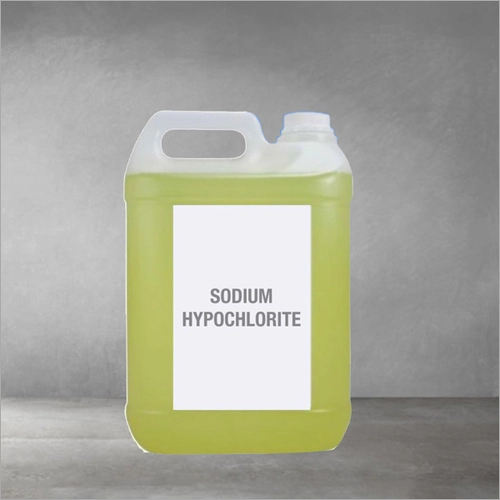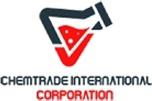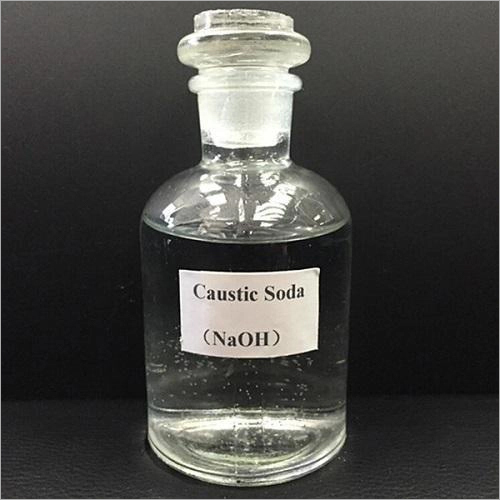
Sodium Hypochlorite
1000 INR/Liter
Product Details:
X
Sodium Hypochlorite Price and Quantity
- 1000 INR/Liter
- 20 Ton
Sodium Hypochlorite Trade Information
- 7 Days
- 5 Liter Plastic Can
Product Description
Backed with a team of skilled professionals we are able to offer Sodium Hypochlorite, which is known as a laundry cleaning and disinfecting product that destroys germs. This chemical is very useful and inexpensive disinfectant. Our offered chemical is basically a strong oxidator and reacts with flammable compounds and redactors. We provide this Sodium Hypochlorite in several quantities as per the needs of customers.
Sodium Hypochlorite Properties:
1. Physical State and Appearance: Sodium hypochlorite is usually a pale yellow-green liquid with a strong chlorine odor. It is a highly reactive compound.
2. Solubility: Sodium hypochlorite is highly soluble in water. The solubility increases with lower temperatures.
3. Chemical Structure: Sodium hypochlorite consists of a sodium ion (Na+) and a hypochlorite ion (ClO-) combined together. The hypochlorite ion is responsible for its oxidizing and disinfecting properties.
4. Oxidizing Agent: Sodium hypochlorite is a powerful oxidizing agent. It can react with various substances, including organic and inorganic compounds, leading to the destruction of microorganisms and the removal of stains and odors.
5. Disinfectant Properties: Due to its strong oxidizing nature, sodium hypochlorite is an effective disinfectant and is commonly used to sanitize surfaces, water, and equipment. It can kill bacteria, viruses, and other microorganisms.
6. pH: Sodium hypochlorite solutions are alkaline in nature and have a pH typically ranging from around 11 to 13, depending on the concentration.
7. Decomposition: Sodium hypochlorite solutions are relatively unstable and can decompose over time, especially in the presence of heat, light, and contaminants. This can lead to the release of chlorine gas, which is toxic and can be hazardous.
8. Corrosive: Concentrated sodium hypochlorite solutions can be corrosive to many materials, including metals, rubber, and some plastics. Proper care should be taken when handling and storing sodium hypochlorite.
9. Applications: Sodium hypochlorite is commonly used for water treatment (disinfection of drinking water and wastewater), bleaching of textiles and paper, stain removal, surface cleaning and disinfection, and as a swimming pool sanitizer.
10. Stability: To maintain stability and effectiveness, sodium hypochlorite solutions are often stored in opaque containers, away from direct sunlight and heat.
Applications of Sodium Hypochlorite:
1. Water Disinfection: Sodium hypochlorite is widely used for disinfecting drinking water and wastewater. It effectively kills bacteria, viruses, and other microorganisms, making the water safe for consumption and preventing the spread of waterborne diseases.
2. Swimming Pool Treatment: Sodium hypochlorite is commonly used to sanitize swimming pool water. It helps maintain a safe and hygienic swimming environment by killing harmful microorganisms and preventing the growth of algae.
3. Surface Disinfection: Sodium hypochlorite solutions are used to disinfect surfaces in various settings, such as hospitals, food processing plants, and households. It can effectively eliminate bacteria, viruses, and fungi from surfaces to reduce the risk of infections.
4. Laundry Bleaching: Sodium hypochlorite is a powerful bleaching agent and is used in laundry applications to remove stains and whiten fabrics.
5. Odor Control: It is used to eliminate foul odors caused by bacteria and organic matter in waste treatment facilities, garbage collection sites, and industrial settings.
6. Food Processing: In the food industry, sodium hypochlorite can be used to sanitize equipment, containers, and food contact surfaces to prevent contamination.
7. Disinfection of Medical Equipment: Sodium hypochlorite solutions are used to disinfect medical instruments, surfaces, and equipment in healthcare settings to ensure proper hygiene and reduce the risk of infections.
8. Mold and Mildew Removal: Sodium hypochlorite can be used to remove mold and mildew from surfaces in bathrooms, kitchens, and other areas prone to moisture and fungal growth.
9. Drain and Sewer Maintenance: It is sometimes used for the maintenance of drains and sewer lines to control bacterial growth and prevent blockages.
10. Laboratory and Research: Sodium hypochlorite can be used as a disinfectant in laboratory settings to sterilize equipment and workspaces.
11. Textile and Paper Industry: It is used for bleaching textiles, paper, and pulp in the manufacturing process.
12. Oil and Gas Industry: In the oil and gas industry, sodium hypochlorite can be used for various purposes, including treating water for injection, controlling sulfide formation, and disinfecting equipment.
FAQ:
Q. What is sodium hypochlorite?
Ans: Sodium hypochlorite is a chemical compound with the formula NaClO. It is commonly known as bleach and is used for its disinfecting and oxidizing properties.
Q. What does sodium hypochlorite smell like?
Ans: Sodium hypochlorite solutions typically have a strong chlorine odor.
Q. What is the common household use of sodium hypochlorite?
Ans: Sodium hypochlorite is commonly used as a bleach for laundry, stain removal, and surface disinfection in households.
Q. Is sodium hypochlorite safe to use?
Ans: While sodium hypochlorite is effective for disinfection, it should be used with caution. It can be corrosive and release toxic chlorine gas if mixed with certain substances. Follow safety guidelines when handling it.
Q. Can sodium hypochlorite be used for water treatment?
Ans: Yes, sodium hypochlorite is widely used for disinfecting drinking water and wastewater to eliminate harmful microorganisms.
Q. How does sodium hypochlorite disinfect surfaces?
Ans: Sodium hypochlorite oxidizes and destroys microorganisms by breaking down their cell walls and disrupting their enzymes and proteins.
Q. Is sodium hypochlorite the same as chlorine?
Ans: Sodium hypochlorite contains chlorine, but they are not the same. Sodium hypochlorite is a chlorine compound used as a disinfectant, while chlorine gas is another form of chlorine used for disinfection.
Q. Can sodium hypochlorite be used for mold removal?
Ans: Yes, sodium hypochlorite can be used to remove mold and mildew from surfaces due to its disinfecting and bleaching properties.
Q. What precautions should I take when using sodium hypochlorite?
Ans: Wear appropriate protective gear (gloves, goggles, and masks), avoid mixing it with other chemicals, work in a well-ventilated area, and follow recommended dilution guidelines.
Q. Can sodium hypochlorite solutions degrade over time?
Ans: Yes, sodium hypochlorite solutions can degrade with exposure to light, heat, and contaminants, which may reduce their effectiveness.
Q. Is sodium hypochlorite environmentally friendly?
Ans: Sodium hypochlorite can have environmental impacts, especially if released into water bodies. It should be used and disposed of responsibly.
Q. What is the pH of sodium hypochlorite solutions?
Ans: Sodium hypochlorite solutions are typically alkaline and have a pH ranging from around 11 to 13.
Q. Can sodium hypochlorite bleach fabrics?
Ans: Yes, sodium hypochlorite is a strong bleaching agent and is commonly used to whiten fabrics and remove stains.
Q. Is sodium hypochlorite used in the food industry?
Ans: Yes, sodium hypochlorite is used in the food industry to disinfect equipment, surfaces, and food contact areas to prevent contamination.
Q. How is sodium hypochlorite produced?
Ans: Sodium hypochlorite is typically produced by the reaction of chlorine gas with sodium hydroxide (caustic soda) to form sodium hypochlorite and sodium chloride (table salt).
Enter Buying Requirement Details
Other Products in 'Textile Chemical' category
 |
Chemtrade International Corporation
All Rights Reserved.(Terms of Use) Developed and Managed by Infocom Network Private Limited. |

 English
English Spanish
Spanish French
French German
German Italian
Italian Chinese (Simplified)
Chinese (Simplified) Japanese
Japanese Korean
Korean Arabic
Arabic Portuguese
Portuguese
